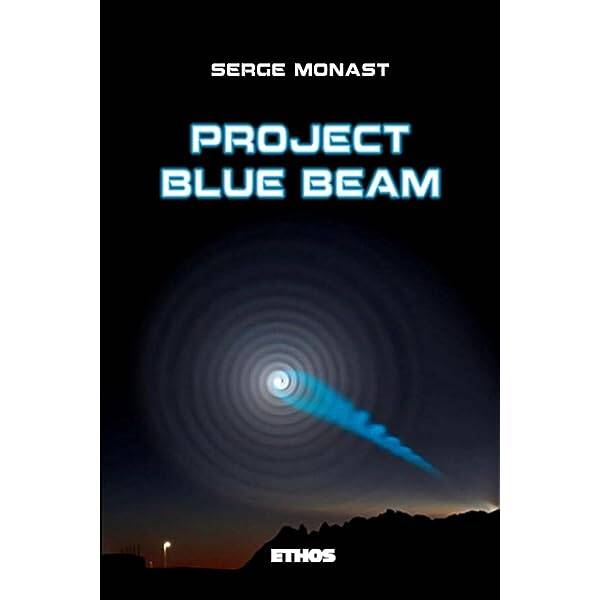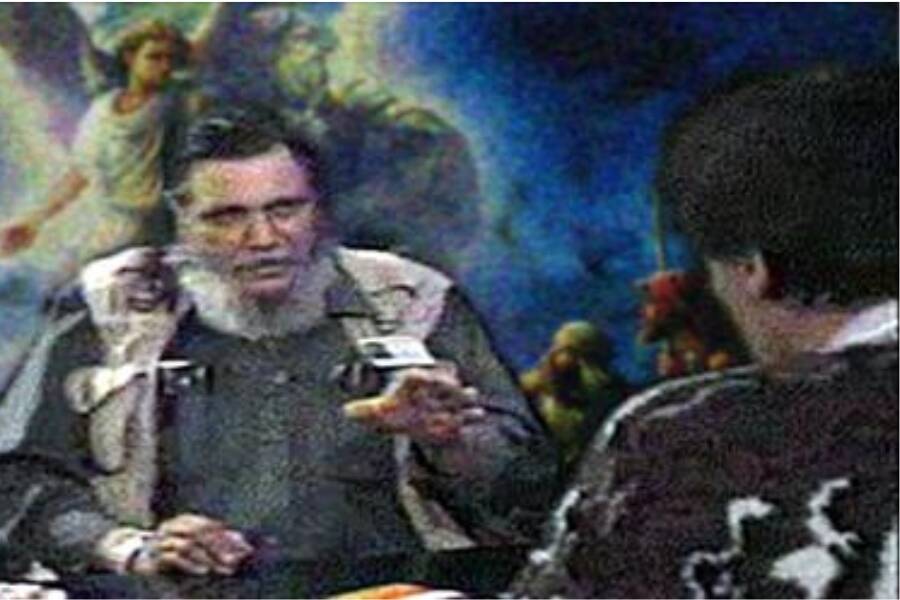In 1994, Serge Monast claimed that NASA and the United Nations were trying to abolish traditional religions and national identities — so they could create a totalitarian one-world government.

Ésotérisme expérimental/IMDbSerge Monast, the Canadian journalist who put forth the Project Blue Beam conspiracy theory.
Serge Monast is a name that has sparked controversy, intrigue, and countless theories within conspiracy circles and beyond.
This Canadian journalist, poet, and essayist became most notorious for his development of the Project Blue Beam conspiracy theory in the 1990s. This theory proposed that NASA and the United Nations were trying to eliminate all traditional religions and national identities — so they could usher in a New World Order with a one-world religion and a one-world government.
Through his life, Serge Monast plunged into the depths of alleged government surveillance, mind control techniques, and the potential for global manipulation by elite groups, leaving behind a legacy that continues to be debated and analyzed by believers and skeptics alike.
Who Was Serge Monast?
Serge Monast’s early life is somewhat obscure, with little known about his personal history, education, or upbringing. He was born on August 12, 1945 in Canada, but beyond that, details about his early years are murky.
What is clear, however, is that by the 1970s, he had embarked on a career as a journalist and later as a conspiracy theorist, diving into the realms of politics, science, and technology with a skeptical and questioning eye.
His poetic endeavors, though less well-known, also reflect a deep engagement with societal and existential questions, showcasing his broader concerns with human life and its many unsolved mysteries.
The crux of Serge Monast’s legacy, however, lies in his development of the Project Blue Beam conspiracy theory, which he outlined in detail in the 1990s.
Serge Monast’s Project Blue Beam Theory
According to Serge Monast, Project Blue Beam is a four-step plan devised by NASA and the United Nations to establish a totalitarian one-world government and a New Age religion with the Antichrist at its helm.
It shares much in common with other New World Order conspiracy theories, which usually claim that an elite organization or organizations are trying to create a single-world government and indoctrinate everyone on Earth, facilitating global enslavement. Monast was clearly inspired by other existing conspiracy theories about the United Nations and the Illuminati.
But in an odd twist, some believe Serge Monast was also inspired by a never-produced Star Trek movie, Star Trek: The God Thing, while creating his Project Blue Beam theory. The film would have introduced a figure that claimed to be God — but was actually a sentient computer.

AmazonThe cover of Serge Monast’s Project Blue Beam.
Monast first introduced the public to the four-step plan that he believed NASA and the United Nations were implementing to create a New World Order in his controversial 1994 text NASA’s Project Blue Beam.
The first step involved the creation of manmade earthquakes at precise locations around the world, which would then uncover supposed evidence discrediting traditional religions, especially Christianity and Islam.
This was, according to Serge Monast, to be followed by a gigantic “space show” wherein three-dimensional optical holograms and sounds would emerge, projecting images of religious figures like Jesus, Muhammad, and Buddha across the sky before the figures slowly merged into one entity: the Antichrist.
The third step involved telepathic electronic two-way communication, where artificial “gods” would speak to each individual in their own language, convincing them of the new “truth” that they should believe.
The final phase was to make humanity believe an alien invasion was about to occur, convince Christians that the Rapture was about to begin, and use “a mixture of electronic and supernatural forces” to activate microchips in all consumer electronics and appliances around the world.
According to Serge Monast, these steps would rely on advanced technology to manipulate populations, paving the way for the dissolution of traditional societies and national identities and the formation of a one-world government and religion that everyone on Earth would be forced to follow.
The Controversial Impact Of Monast’s Theories
While Project Blue Beam may have been Serge Monast’s magnum opus, it was far from the only conspiracy theory that he believed in.
He delved into the realms of mind control, asserting that the government possessed technology capable of inducing disease or death from a distance, controlling thoughts and behavior, and covertly surveilling individuals.
He suggested that such techniques were part of a broader agenda to frighten, dominate, and control the global populace.
He expanded upon his original Project Blue Beam theory in 1995 in yet another controversial text entitled Les Protocoles de Toronto, which was heavily modeled on The Protocols of the Elders of Zion, a fabricated, antisemitic text detailing a Jewish conspiracy to take over the world.

Wikimedia CommonsSerge Monast on the TV show Ésotérisme Expérimental.
Despite the fantastical nature of many of his claims, Serge Monast’s work resonated with fellow conspiracy theorists, especially among those already distrustful of the government and skeptical of mainstream narratives.
His assertions about Project Blue Beam, in particular, found a foothold in various conspiracy theory communities, where they were seen as exposing the ultimate plan of elite power brokers to manipulate humanity.
Critics, however, have dismissed Monast’s theories as unfounded, paranoid, and bizarre, arguing that they lack credible evidence and play into fears of technological advancement and globalization.
They point out the danger in Serge Monast’s type of thinking, noting how it can fuel distrust in institutions, spread misinformation, and detract from legitimate concerns about privacy, government surveillance, and technology.
Serge Monast’s Death And Legacy
Serge Monast’s story ended in 1996 — just two years after his Project Blue Beam theory was made public — when he died at the age of 51.
Official reports attributed his death to a heart attack, but his followers and other conspiracy theorists claimed that he was assassinated due to his outspoken views and the threat they purportedly posed to the global elite.
This assertion, though widely disputed, has naturally added a layer of martyrdom to Monast’s story within certain conspiracy circles.
The impact of Serge Monast’s work remains debatable. On one hand, his theories represent a profound skepticism of authority and a deep-seated concern for the potential misuse of technology in manipulating populations.

Department of DefenseIn 2020, the Pentagon declassified three videos of UFOs filmed by Navy pilots. This revelation excited many people, but made others suspicious about the objects — and made them question why officials would share this information.
But they also reflect a broader trend of conspiracy thinking that can obscure rational discourse and undermine efforts to address real societal issues.
Today, Monast’s theories have seen a newfound re-emergence on social media, particularly in the wake of the U.S. government becoming more forthcoming about UFO sightings. After all, Monast once claimed that “flying saucers” were actually NASA’s test runs for the “space show.”
Of course, there has never been any real proof that Monast’s theory was true.
Still, whether you view Monast as a visionary whistleblower or a purveyor of baseless theories, his life and work encapsulates the complex relationship between truth, belief, and power in the modern world. In the end, the legacy of Serge Monast is emblematic of the enduring fascination with and fear of the unknown mechanisms of power that govern our world.
Through his writings and the theories he propagated, Serge Monast has left an indelible mark on the fabric of conspiracy theory culture, ensuring that his name will be remembered and debated about for years to come.
After learning about Serge Monast, the man behind Project Blue Beam, read about the Black Knight Satellite that some say is an alien ship. Then, learn about Area 51, the rumored alien research facility in Nevada.





